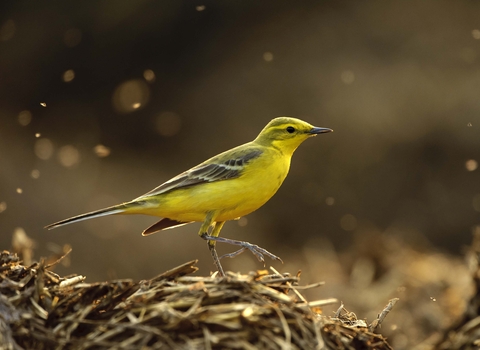
©Chris Gomersall/2020VISION
Yellow wagtail
The yellow wagtail can be spotted running about, chasing insects on lowland damp marshes and meadows during summer. As its name suggests, it does wag its tail!
Enw gwyddonol
Motacilla flavaPryd i'w gweld
March to SeptemberTop facts
Stats
Length: 17cmWingspan: 25cm
Weight: 18g
Average lifespan: 3 years
Classified in the UK as Red under the Birds of Conservation Concern 5: the Red List for Birds (2021). Priority Species under the UK Post-2010 Biodiversity Framework.
